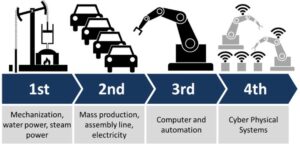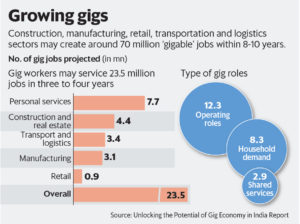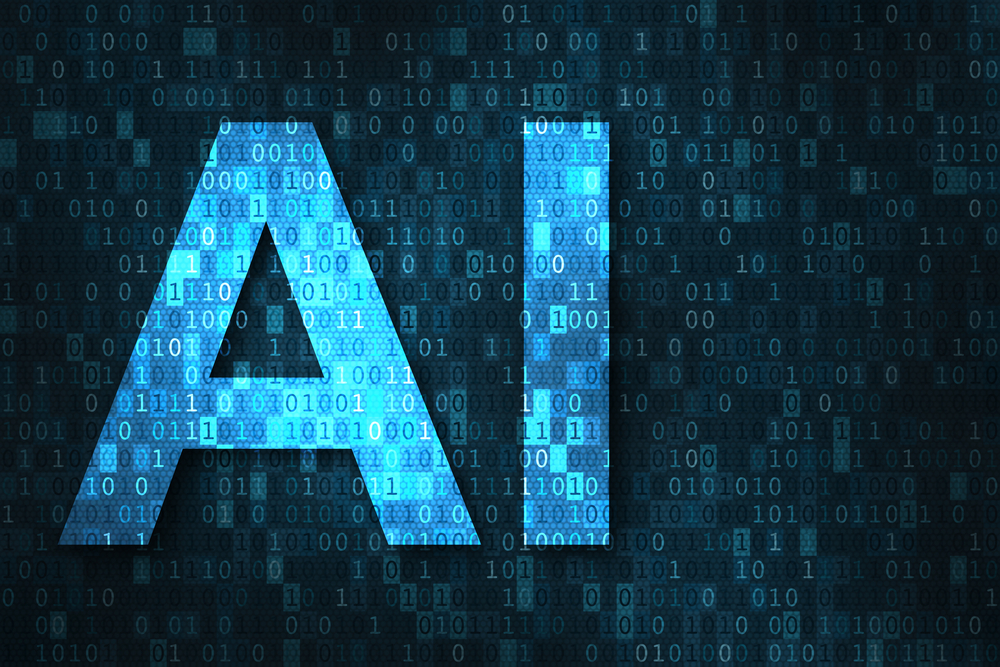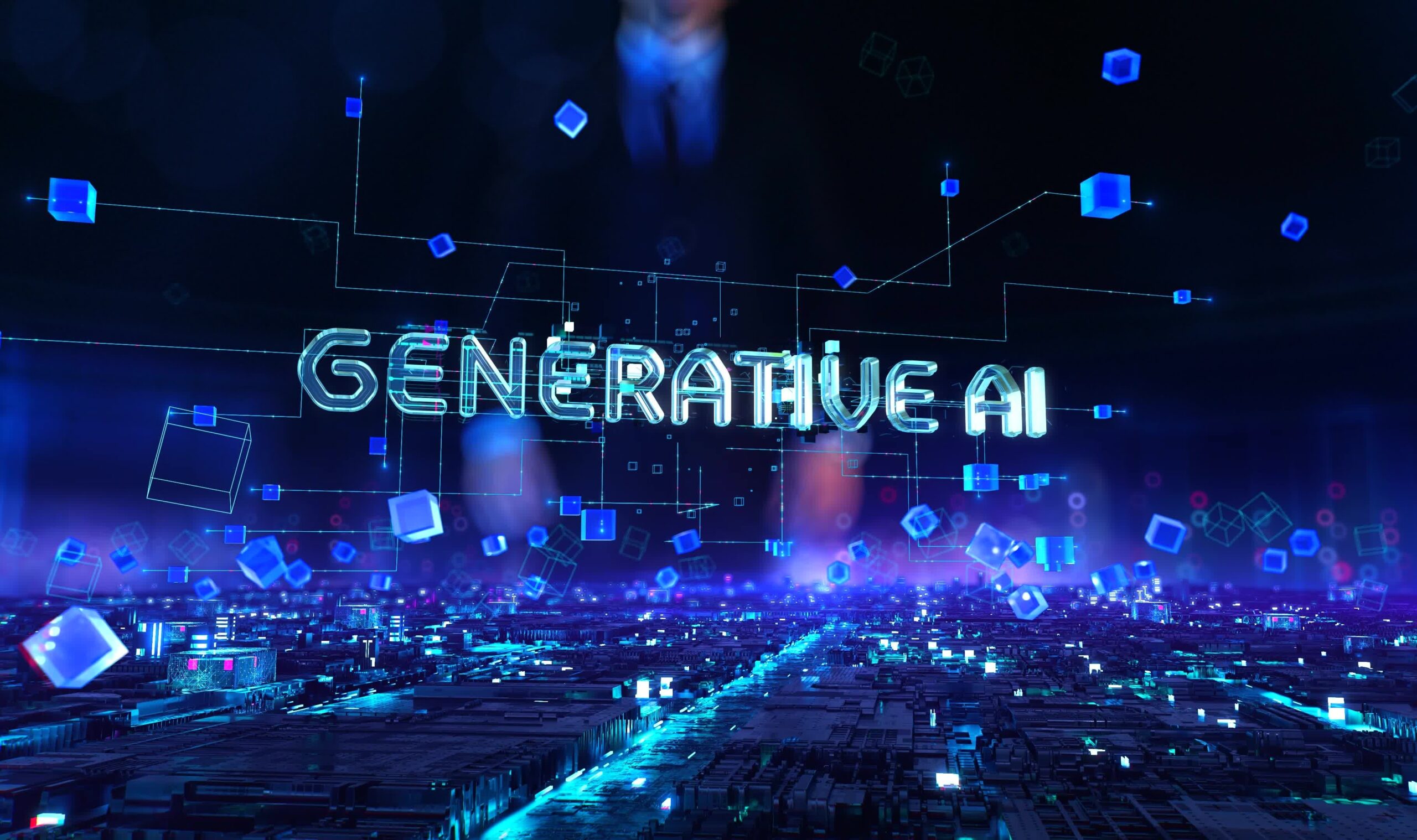In the dimly lit office of a Mumbai design studio, well past midnight, Sachin Samuel hunches over his computer keyboard. With a few keystrokes, his screen bursts into life, showcasing a series of breathtaking images of gods, demons, and warriors, the protagonists of the ancient Indian epic, the Ramayana. These are no ordinary images. Photorealistic visions depict characters wielding weapons and standing in a forest, weapons in hand, as if ready to step out of the screen into our world.

An AI-generated image of the mythical monkey-god Hanuman.
Each image’s staggering depth of detail belies that they were entirely generated by computer software. Samuel’s creative process unfolds like a dance between man and machine, with him as the creative director. He inputs detailed descriptions of what he envisions, and the software responds with numerous creative interpretations.
“It takes several iterations to develop a single picture,” says Samuel. “It usually takes me an hour or about half a day.” Reflecting on how his work has evolved with artificial intelligence (AI), he explains, “I produce these images in batches, a portfolio…Ten years ago, an entire portfolio of 15 images would have taken an entire team—around eleven people, including creative directors, artists, graphic designers, and production artists—three months to create. With MidJourney, I can do it in a week.”
When asked if AI has indeed improved his productivity to the extent of putting ten people out of business and reducing his delivery time twelve-fold, Sachin responds solemnly, “I never thought of it that way. But yes, that is true.”
Samuel’s experience indicates a larger shift within the global creative industry. A creative director in an AI-augmented environment now boasts a productivity increase of 120 times than it did a decade ago. According to a World Economic Forum study, 83 million jobs may be directly impacted by AI within the next five years, and a staggering 80 percent of jobs face the possibility of automation in the coming decades. This transformative disruption echoes the scale of the Industrial Revolution.
In this series installment, we explore the confluence of events and technology reshaping our world, with AI as the centerpiece. Welcome to the brave new world of AI—a world being flattened by artificial intelligence.
A Flat World
In Thomas L. Friedman’s groundbreaking book, “The World is Flat,” first published in 2005, the author delves into the complexities of globalization and the influence of technology on the global economy, society, and culture. Friedman posits that the 21st century has given rise to a “flattened” world in which a more level playing field has emerged for global competition.
This newfound sense of equality is primarily attributed to technological advancements such as the internet, which has revolutionized communication and collaboration across borders. In his exploration, Friedman examines the driving forces behind globalization, the strategies individuals, companies, and nations must employ to thrive amidst these changes, and the myriad challenges and risks a flat world presents, such as outsourcing, inequality, and environmental concerns.
Yet, as the forces described by Friedman continue to shape our ever-flattening world throughout the first decade of this century, we now face an array of new, unforeseen factors that are molding and remolding our daily experiences. These forces herald the onset of a new phase of globalization – Globalization 4.0 – and signal an era of adaptation, transformation and upheaval on a global scale.
A World Transformed
As the tectonic plates of the global landscape quietly shift beneath our feet, we find ourselves on the cusp of a new era – a fourth wave of globalization. This transformative epoch, known as Globalization 4.0, is relentlessly overhauling industries worldwide. To understand this seismic shift, we must look back at the pivotal transformations that have transpired since the Global Financial Crisis of 2007. The past decade has borne witness to five monumental drivers of change:
- Technological Advancements: Progress in areas such as mobile computing, cloud computing, artificial intelligence, and the Internet of Things (IoT) have fostered an unprecedented level of communication, collaboration, and information exchange. These advancements have amplified the world’s “flatness,” giving rise to innovative business models and work formats, such as remote work and the gig economy.
- The Rise of China: China has made significant strides since 2005, evolving into a powerhouse within the global arena. Its burgeoning economy and expanding influence have redefined the landscape of global trade and investment, sparking both opportunities and challenges, along with concerns about China’s growing clout.
- Climate Change: As awareness of climate change’s repercussions grows, so does the emphasis on sustainability and environmental considerations within global trade and investment. This consciousness shift has led to new business regulations, standards and a burgeoning demand for sustainable products and services.
- Political Polarization: The emergence of populism, nationalism, and political polarization has created greater fragmentation and uncertainty in global politics and economics. This shift has posed new hurdles for international cooperation and collaboration and has incited a rising sense of anxiety and instability within the global system.
- Pandemics: The COVID-19 pandemic has significantly disrupted globalization, affecting global supply chains, international travel and tourism, and the global economy at large. This crisis has underlined the global system’s interconnectedness and emphasized the need for enhanced collaboration and cooperation in confronting global challenges.
These transformations stem from a complex interplay of factors that collectively redefine the nature of global trade, geopolitics, and daily life. Today’s salient factors include:
- Trade Tensions and Protectionism: Rising trade tensions and protectionism, particularly between the United States and China, have resulted in new barriers to trade and investment, raising concerns about the future of global commerce.
- Digital Transformation: The accelerated pace of digital transformation, facilitated by advanced technologies such as AI, big data analytics, and IoT, has enabled new business models and work methods, offering new opportunities for global trade and investment.
- Global Supply Chain Disruptions: The COVID-19 pandemic has exposed the fragility of global supply chains, disrupting the global flow of goods and services. This crisis has underscored the importance of supply chain resilience and diversification.
- Geopolitical Tensions: Rising geopolitical tensions, especially between major powers like the United States, China, and Russia, have posed new challenges for global cooperation and collaboration, causing concern about the future of international order.
To fully comprehend how these factors shape our daily lives, we must journey back to the genesis of modern industry – the Industrial Revolution.
Revolutions in Industry
The market efficiency theory posits that financial markets adeptly incorporate all relevant information into the prices of securities. It’s worth noting, however, that various factors, such as historical events like industrial revolutions, can shape market efficiency. These revolutions have redefined market structures through abrupt disruptions and alignments, leading to exponential growth in market efficiency.
The first industrial revolution, marked by the advent of steam power, significantly transformed the manufacturing industry. With the introduction of machinery powered by steam engines, work shifted from relying on beasts of burden to mechanized production. However, this revolution also had implications for the location of industries. As steam engines required water sources for power, industrial clusters began to emerge closer to these sources. This spatial concentration of industries positively and negatively affected market efficiency. On the one hand, it facilitated economies of scale and specialization, allowing for increased productivity and output. On the other hand, it limited market efficiency by creating regional disparities and hindering the efficient allocation of resources.

The 4 Industrial Revolutions (by Christoph Roser at AllAboutLean.com)
The second industrial revolution, characterized by the widespread adoption of electricity, brought further advancements to market structures. Electricity replaced steam power, enabling industries to be located closer to sources of raw materials. This shift reduced transportation costs and facilitated the rise of vertical and horizontal integration among modern corporations, where mass production and assembly lines produced goods at exponentially lower costs. As a result, large-scale corporations emerged, consolidating various stages of production and distribution within a single organization. This integration led to increased market efficiency by streamlining processes and optimizing resource allocation. Additionally, the second industrial revolution witnessed the rise of blue-collar jobs, as workers were needed to operate machinery and oversee production processes.
The third industrial revolution, fueled by advancements in electronics and information technology, profoundly impacted market efficiency and employment patterns. Electronics replaced humans in repetitive tasks that required advanced logical processing, leading to increased automation and productivity. However, a significant side effect of this revolution was the emergence of the internet and a globally connected workforce. This facilitated the rise of white-collar jobs, particularly in knowledge-based industries such as information technology, finance, and services. While market efficiency continued to improve with faster dissemination of information and increased global connectivity, blue-collar jobs also stagnated as many tasks became automated.

Transformation of business relationships under Industry 4.0
The fourth industrial revolution, characterized by the rise of artificial intelligence (AI), is currently underway and has significant implications for market efficiency and employment. AI can replace humans in tasks involving creative logic and intricate coordination. As AI systems become more sophisticated, there is a potential for a decline in white-collar jobs traditionally held by humans. This may result in a shift in the labor market and a reevaluation of the skills and roles that humans can occupy. However, it is important to note that the full effects of this revolution are yet to be realized, and there are ongoing discussions and debates regarding the future of work and the potential consequences for market efficiency.
Future of Work
Major historical events, like the Industrial revolutions, have shaped market structures and influenced market efficiency. Each revolution has introduced substantial changes to work, employment patterns, and resource allocation, with both positive and negative consequences. As we progress into the era of AI and automation, the implications for market efficiency and the labor market are still under scrutiny. Nonetheless, several emerging trends in the past decade have already begun to shape the way we work:
- Remote Work: Technological advancements have enabled remote work, offering increased flexibility and work-life balance, but also raising concerns about isolation and burnout.
- Gig Economy: Fueled by globalization, the gig economy has allowed for more flexible and autonomous work, but has also raised concerns about job security and benefits access.
- Outsourcing: Job outsourcing to countries with lower labor costs has led to job losses and wage stagnation in developed countries, while fostering rapid economic growth in developing ones.
- Increased Competition: Globalization has intensified competition in various sectors, emphasizing innovation and efficiency but also raising concerns about job losses and worker protections.
- Multicultural Workforces: The global nature of businesses has resulted in diverse workforces, offering a broader range of perspectives but presenting challenges in communication and collaboration.

The rapid rise of the Gig Economy in emerging countries like India.
As we navigate the ever-changing terrain of technology, predicting the full scope of disruption caused by artificial intelligence (AI) remains largely speculative. However, emerging trends and compelling cases like that of Sachin Samuel offer insights into defining features of the new employment landscape, illuminating the transformative nature of AI and its potential impact on future work.
One notable trend is the rise of solopreneurship—an innovative spin on entrepreneurship driven by individuals or small teams of three to five members. Leveraging AI-driven tools, solopreneurs can now accomplish complex tasks once reserved for larger SMEs. This shift empowers individuals to take control of their career paths and contributes to a more dynamic, flexible job market.
Another distinguishing characteristic is the emergence of creative directors. These professionals possess both a deep understanding of AI and a creative mindset, enabling them to guide AI-driven systems toward desired outcomes. As semantic orchestrators, creative directors bridge the gap between human creativity and AI-enabled technology, spearheading projects that combine AI with human ingenuity and generating groundbreaking innovations across various industries.
Additionally, the advent of ‘metacreation platforms’ is transforming how work is orchestrated and executed. These platforms facilitate collaboration among a distributed remote workforce of solopreneurs, using AI algorithms and seamless communication tools to coordinate and manage complex projects. Metacreation platforms harness the collective potential of solopreneurs, fostering a culture of collaboration, innovation, and efficiency.
Although these features offer a glimpse into the future, it’s crucial to recognize that the employment landscape remains in constant flux. The impact of AI on industries and professions involves a multifaceted interplay of technological advancements, societal dynamics, and individual choices. The potential benefits are numerous, from increased autonomy and flexibility to diverse and inclusive work environments. However, challenges such as ensuring equal access to opportunities, addressing the ethical implications of AI, and managing potential job displacement call for careful consideration and proactive action.
Conclusion
As our journey into the realm of AI continues, the world of work and industry stands ready for a deeper metamorphosis. In this unexplored expanse, it becomes beneficial and essential to keep our senses keenly attuned to the nascent trends, ready to adapt and evolve with the shifting contours of AI-induced opportunities. The future of employment will doubtless result from an intricate dance between human capability and advanced technologies. This delicate interplay will carve out new paths in the landscape of innovation, creativity, and collaboration and herald an era we are just beginning to understand.
(Sreekant Sreedharan is an accomplished entrepreneur and computer scientist passionate about investing in cutting-edge technologies. He works as an investment advisor to the CAIF, where he helps identify promising startups and emerging technologies focused on addressing climate action. Views and opinions expressed in this program are those of the author and do not necessarily reflect the views or positions of any entities he represents. You can reach him at: sreekant.sreedharan@gmail.com)










Discussion about this post